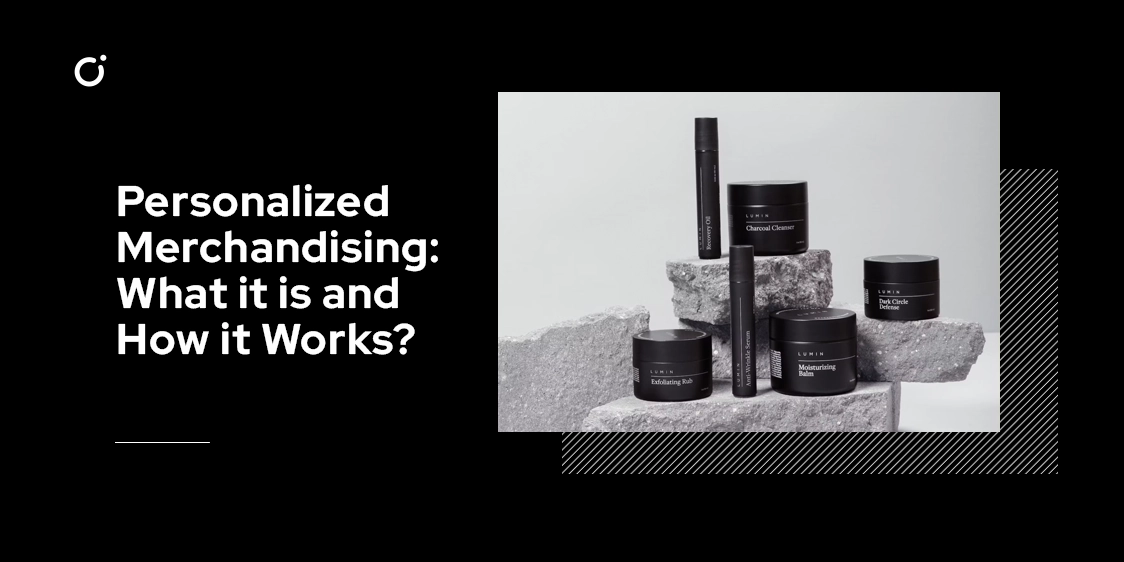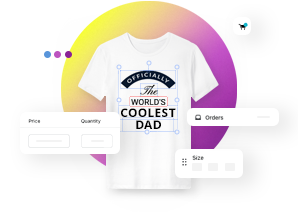On this page
Personalized Merchandising: What It Is and How It Works

Imagine a virtual storefront that understands your tastes, anticipates your desires, and presents an array of products tailor-made to resonate with your sensibilities.
This is the essence of personalized merchandising, where technology and customer insights converge to create a shopping journey that feels like it was crafted exclusively for you.
In this article, we delve into the world of personalized merchandising, uncovering its inner workings and unraveling the benefits it brings to both businesses and discerning consumers.
What is Personalized Merchandising?
You could say that personalized merchandising is a data-driven marketing technique that involves tailoring product recommendations, advertisements, and overall shopping experiences to suit individual customer preferences. The goal is to offer customers products and services that align with their unique preferences, shopping habits, and needs, thereby increasing engagement, customer satisfaction, and ultimately, driving revenue for businesses.
A study by Segment revealed that 44% of consumers said they were likely to become repeat buyers after a personalized shopping experience. (The 2017 State of Personalization Report)
At the core of personalized merchandising lies the use of customer data. E-commerce platforms collect vast amounts of information about customers, including their browsing behavior, purchase history, demographics, location, and more. This data is then analyzed and used to create personalized shopping experiences, enhancing the relevance of product recommendations and advertisements. And it really works! According to Accenture, 75% of consumers are more likely to buy from a retailer that recognizes them by name, recommends products based on past purchases, or knows their purchase history.
How Does Personalized Merchandising Work?
Personalized merch relies on sophisticated algorithms and artificial intelligence to process and interpret customer data. Here's a step-by-step breakdown of how it works:
-
Data Collection: E-commerce platforms gather data from various sources, such as website interactions, social media activity, customer profiles and historical purchases. This data includes click-through rates, time spent on pages, items added to the cart, past purchases, and more.
-
Data Analysis: Advanced analytics tools process the collected data to identify patterns, preferences, and trends. This analysis helps create detailed customer profiles, segmenting customers based on their behavior and preferences.
-
Customer Segmentation: Customers are grouped into segments based on similarities in their data profiles. These segments might include frequent shoppers, first-time visitors, high spenders, bargain hunters, etc.
-
Product Recommendations: Using machine learning algorithms, personalized merchandising systems suggest products that are most likely to interest each customer based on their segment and individual behavior. These recommendations appear on the website's homepage, product pages, and in email newsletters.
-
Dynamic Content: Websites can display dynamic content based on customer preferences. For instance, the homepage may showcase different product categories to different customers, depending on their past interactions.
-
Email and Marketing Campaigns: Personalized emails and marketing campaigns are sent to customers, showcasing products relevant to their preferences and previous purchases.
-
A/B Testing: Constant experimentation and A/B testing are employed to refine and improve the personalized merchandising strategy over time.
Examples of personalized merchandising by the big brands
Amazon: Amazon uses personalized recommendations to suggest products that customers are likely to be interested in. This has helped Amazon to increase sales and customer satisfaction.
Spotify: Spotify uses personalized merchandising to recommend songs and playlists to customers based on their listening history, likes, and dislikes. For example, if a customer has listened to a lot of rock music, Spotify might recommend other rock songs on their “Discover weekly” playlist, or playlists that are made up of rock songs.
Starbucks: Starbucks uses personalized merchandising to create a unique experience for each customer. For example, the company offers a variety of coffee drinks that can be customized to the customer's liking.
On a more general note, personalization has become standard practice in many more cases, as brands are trying to show that they care about customer choices and want to adapt.
You know that many sports teams are using personalized merch to engage with fans. But some teams offer fans the opportunity to create their own custom jerseys or hats. This allows fans to show their support for their team in a unique way, and it also helps to create a sense of community among fans.
In the event business, consumers don’t want standardized decorations anymore, like if you’re organizing a kid's birthday you want decorations with their name and age represented everywhere. Most likely, you will also want them to be in specific colors or even patterns, that best fit the mood of the party.
Using customer data from previous purchases, and history decoration sellers can provide quite good recommendations or themes, for their next party!
These and many more examples show how we are moving towards having a completely personalized experience everywhere we go.
Benefits of Personalized Merchandising
The rise of personalized merchandising is not without reason; it offers numerous advantages to both businesses and consumers.
-
Enhanced Customer Experience: By presenting customers with products that align with their interests and needs, personalized merchandising creates a seamless and enjoyable shopping experience. Customers feel valued and understood, increasing their loyalty to the brand.
-
Increased Customer Engagement: Personalization draws customers deeper into the e-commerce platform, encouraging longer browsing sessions and repeat visits. Engaged customers are more likely to make purchases and share positive experiences with others.
-
Higher Conversion Rates: Relevant product recommendations and tailored content have a direct impact on conversion rates. When customers are presented with items they genuinely desire, they are more likely to make a purchase.
-
Improved Customer Retention: Personalization fosters customer loyalty, reducing the likelihood of customers switching to competitors. Loyal customers are also more likely to leave positive reviews and refer others to the brand.
-
Better Inventory Management: Personalized merchandising helps businesses understand which products are in demand and which are not. This insight enables them to optimize inventory management, reducing wastage and optimizing stocking levels.
-
Increased Sales and Revenue: When customers find products that resonate with them, they are more inclined to make additional purchases. This increased basket size contributes to higher sales and revenue for the business.
-
Data-Driven Decision Making: The wealth of customer data collected in personalized merchandising helps businesses make informed decisions about their products, marketing strategies, and future expansion plans.
Challenges and Considerations
While personalized merchandising offers numerous benefits, it comes with some challenges and considerations that businesses must address:
-
Data Privacy and Security: Collecting and utilizing customer data raises concerns about privacy and security. Businesses must prioritize data protection and ensure compliance with relevant data protection laws.
-
Accurate Data Analysis: The success of personalized merchandising relies on accurate data analysis. Errors in data processing can lead to irrelevant product recommendations and damage the shopping experience.
-
Avoiding Over-Personalization: Businesses must strike a balance between personalization and intrusiveness. Overwhelming customers with personalized content may lead to feelings of discomfort or invasion of privacy.
-
Responsiveness and Adaptability: Personalization strategies must be flexible and adapt quickly to changing customer preferences and market trends.
To Sum up
In today's competitive e-commerce landscape, personalized merchandising has emerged as a potent tool for attracting and retaining customers. By leveraging customer data and advanced algorithms, businesses can offer highly customized shopping experiences that resonate with individual preferences.
This not only improves customer satisfaction and engagement but also drives sales and revenue. However, businesses must navigate the challenges of data privacy, accuracy, and customer comfort to ensure the success of their personalized merchandising strategies. As the e-commerce industry continues to evolve, personalized merchandising is likely to play an increasingly significant role in shaping the future of online retail.
Tags
You can add a conetnt on the right side bar.

